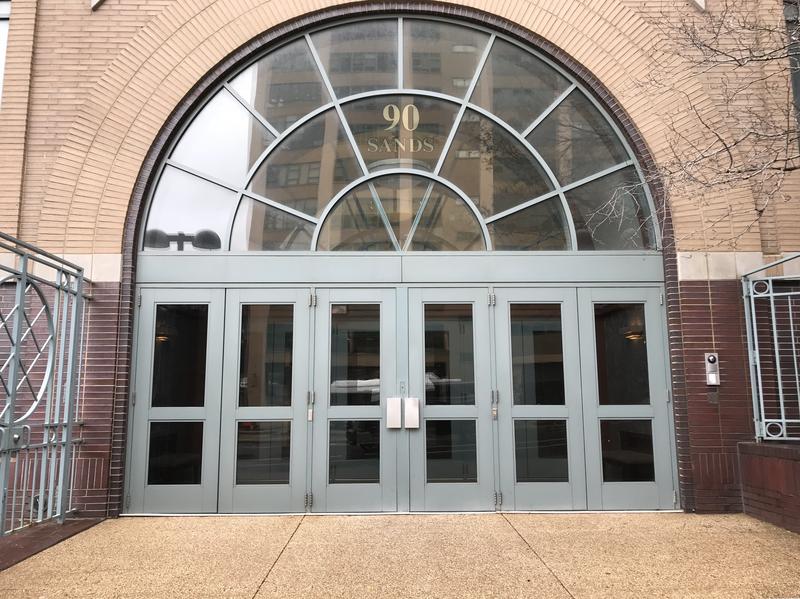
The 28-story residence hall at 90 Sands Street in DUMBO is sparsely decorated; the large community rooms where hundreds of Jehovah’s Witnesses once gathered now sit empty. But give it a year's worth of renovation work and developers say the building will provide permanent housing for hundreds of New Yorkers, many of whom are now living in homeless shelters.
“We were jumping up and down, that’s true,” said Brenda Rosen, the president of Breaking Ground, describing the excitement at the acquisition.
The city closed financing on 90 Sands earlier this month, contributing more than $157 million to convert the residence hall into a building that provides on-site health services and caseworkers for tenants and neighborhood residents. Some 300 of the units will be for tenants who qualify for supportive housing, while another 200 will be earmarked as affordable.
For the de Blasio administration, 90 Sands is a step toward fulfilling its pledge to build 15,000 supportive housing units by 2030. The units offer a way out of homelessness for people with a special need, including mental health diagnoses, disabilities, or a history of trauma or abuse. Less than 5 percent of people who get a supportive housing unit return to a life of homelessness, according to Breaking Ground, one of the city's largest providers of supportive housing.
“These are folks who, with the right services, can live and work and participate in the community,” Deputy Mayor Alicia Glen told WNYC.
After Mayor de Blasio announced his goal to build 15,000 units, Gov. Andrew Cuomo announced an even higher one: 20,000 supportive units in the same 15-year time frame. Advocates lauded the combined commitment as a historic contribution to the supportive housing stock in New York. While the city and state have entered into joint initiatives to build supportive housing for decades, proponents say the effort to develop 35,000 units will make a lasting effect on New York’s homelessness population, which totals approximately 90,000 individuals statewide.
Some advocacy groups charge the mayor and the governor have gotten off to a lackluster start. City officials say they have financed about 4,000 supportive units since the beginning of the de Blasio administration, though only 600 people have moved into units under the mayor’s announcement three years ago. According to the state’s Office of Mental Health, just about 300 units funded by the governor’s new plan are operational.
“These are hard transactions to do,” Glen said. “An individual six-month period or year-long period is not really a reflection that we’re off target. It’s just going to be somewhat uneven.”
Tenants who have moved into supportive housing describe it as a new start. Jennifer Garris has lived in her unit in downtown Brooklyn since 2009, after years of living in shelters. She was able to visit the doctor for the first time in years, and start treatment for diabetes and hypertension.
“There is a God, honey,” she said.
